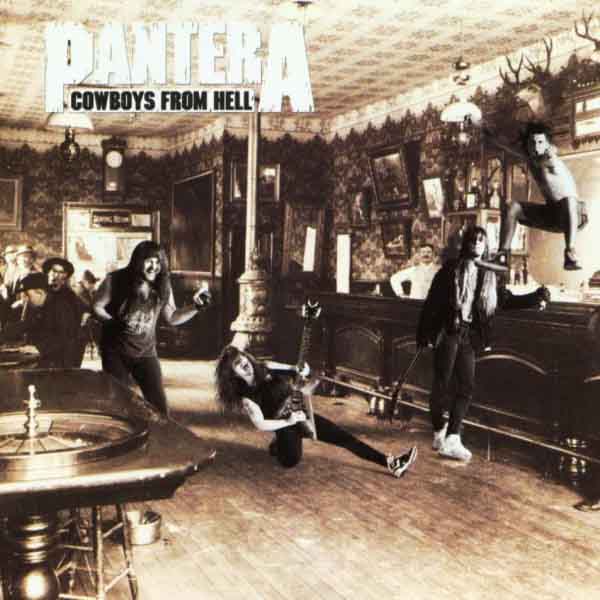Tom G. Warrior is a relentless innovator and amazing composer. As he details in his book Only Death is Real: An Illustrated History of Hellhammer he grew up in an abusive, uncertain environment within a broken home. He also grew up in “perfect” Switzerland, a place that has more rules than people. These events shaped his personality or rather, the limitations that are still imposed upon it.
What happened was that young Tom G’s ego was crushed and doubt was introduced into his mind. Doubt about the purpose of life, or even his own life. Doubt of self-worth. Fear that at any moment he might find himself without a justification for existing, and be truly discarded and alone. That’s a heavy load for a young person to carry, but the sequential success of Hellhammer and then Celtic Frost lifted Tom out of it. It also pushed aside a healing process.
When Celtic Frost evaporated, Tom launched on a series of attempts to find popularity again, but on his own terms. First, his highly inventive industrial music, and later, attempts to be contemporary. The latest two are below, and they are marked by a duality: a great underlying talent, desperately attempting to ingratiate itself with newer metal audiences. Like all things that do not take a clear direction, they are thus lost on both fronts.
This is not a hit piece on Tom G Warrior. Like many metalheads, I hold him in the highest regard. He is one of the great innovators and farseeing minds in metal. However, his tendency to try to adapt to what is current shows what is currently happening in metal: in a dearth of ideas, the genre is recombining past successes that represent the culmination of earlier genres, and is trying to recapture its lead by offering a buffet of different influences. But alas, like the music of Triptykon, these forays are lost causes.
Currently a morass of subgenre names exist. We can call it metalcore, or modern metal, or math metal, or tech-deth, or even djent, but all of it converges on a single goal: to make a form of that great 1980s speed metal — Metallica, Anthrax, Testament, Exodus, Nuclear Assault — that used choppy riffs made up of muted chords to encode complex rhythms into energetic songs. To that, the modern metal bands have added the carnival music tendency to pick entirely unrelated riffs to add variety, the grooves of later speed metal, and the vocals and chord voicings of late hardcore and its transition into emo.
What this represents is not a direction, but lack of one. By combining all known successes from late in these subgenres, modern metal is picking up where the past left off before death metal and black metal blew through and rewrote the book. The problem is that making music that is intense like those underground genres is difficult, and even more, unmarketable. It approaches the issues in life that most of us fear, like mortality and failure in the context of powerlessness and meaninglessness, and thus presents a dark and obscure sound that makes us uncertain about life itself. Like Tom G Warrior living through a shattered marriage of his parents and a society too concerned with order to notice its own boredom and misery, black metal and death metal shatter stability and replace it with alienated existential wandering.
On the other hand, late punk offered ideological certainty and heavy doses of emotion. Late speed metal, which Pantera cooked up out of heaping doses of Exhorder, Prong and Exodus, offers a groove and a sense of a party on the wild side. Inserting bits of death metal, especially its technical parts, and some of the frenetic riffing of Discordance Axis allows these bands to create a new kind of sound. But at its heart, this music is still speed metal. Where death metal played riff Jenga and put it all together in a sense that told a story, modern metal is based in variety and distraction. It exists to jar the mind, explore a thousand directions, and without coming to a conclusion ride out in the comforting emulation of the chaos of society around it.
But at its heart, these bands are speed metal. Like Triptykon who revitalize the E-string noodling and riff texture of more aggressive speed metal bands, with the bounce of Exodus and the groove of Pantera, these bands offer a smorgasbord combined into one. They mix in melodic metal, derived from what Sentenced and later Dissection made popular, to give it a popular edge. However, what they’re really doing is regressing to a mean. This has happened in metal before, when mid-1970s bands recombined Led Zeppelin and Black Sabbath into rock-style metal, and in the mid-1980s when glam metal did the same thing but mixed in the gentler sounds of late 1970s guitar rock bands. When metal loses direction, it recombines and comes up with a mellower, less threatening version of itself.
All of this is well and good if we do one single but difficult thing: recognize that what we’re listening to now is a dressed-up version of what metal and punk were doing in the late 1980s. We’re walking backward in history, away from that scary underground death metal and black metal, and looking toward something less disturbing and more fun at parties. It seems no one has come out and said this, so I figured it must be said. Enjoy your weekend.
17 CommentsTags: discordance axis, djent, jawbreaker, metalcore, modern metal, pantera, progressive metal, Speed Metal, tek-deth, triptykon


